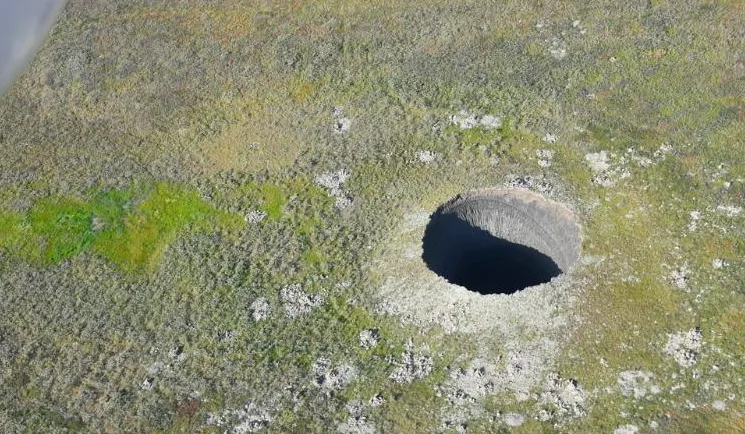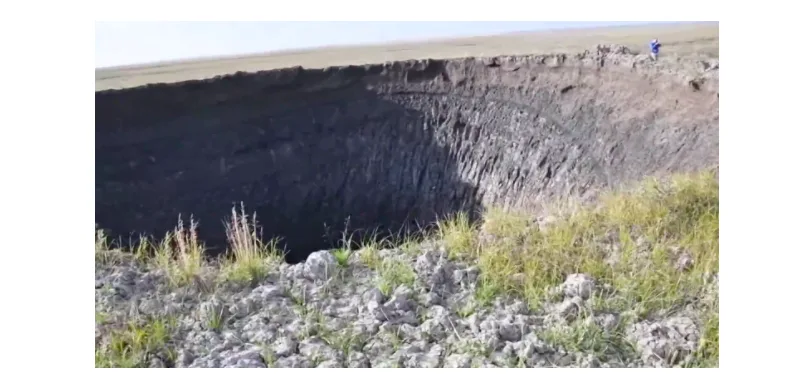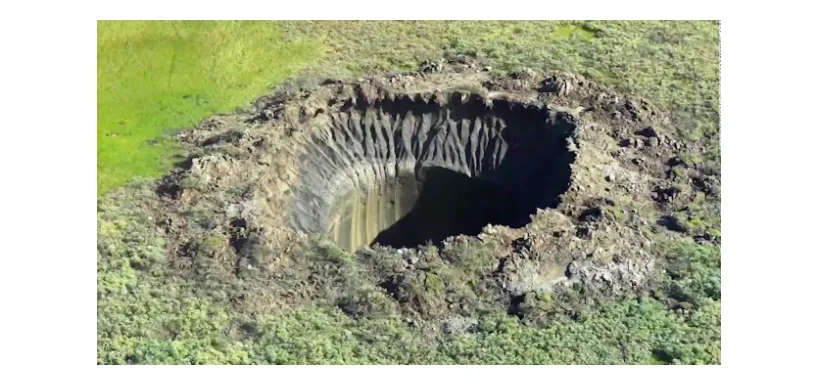
Giant sinkholes are mysteriously appearing in Siberia, study explores why
Experts say the sinkholes and other changes in the Arctic landscape indicate that this region is rapidly thawing
Researchers were puzzled by the enormous crater that mysteriously appeared in the Western Siberian in August 2020. The symmetrical, gaping hole measured 20 metres wide and 30 metres deep, and experts struggled to reach a consensus about what caused its formation.
A study published in Geosciences by a team of Russian scientists reports that a buildup of methane gas underneath the Earth’s surface exploded and formed the crater. Drones were flown into the crater to capture dozens of images that were then reconstructed with 3D modelling so the researchers could analyze its structure.
The crater imaging and existing knowledge of the gases released by regional lakes, rivers, and soil lead to the conclusion that methane filled a cavity in the ice and resulted in a significant amount of pressure on the ground, which eventually caused a blowout crater.
“Warming in the Arctic is causing the degradation of permafrost, which intensifies gas emissions into the atmosphere facilitating the process of climate change. Intensive gas emissions from permafrost were observed in the Russian Arctic in the north of Western Siberia especially on the Yamal and Gydan Peninsulas,” the study says.

Credit: Evgeny Chuvilin/CNN
Methane is a greenhouse gas that is 84 times more powerful than carbon dioxide at warming the Earth over a 20-year period. Certain regions of Arctic permafrost, which is ground that is continuously frozen throughout the year, have begun to thaw as global temperatures warm. Layers of soil that were once frozen are becoming warm enough for microbial life to wake up and decompose organic matter — a process that releases carbon dioxide and methane. Frozen ice crystals also contain methane molecules, which are released when the ice melts.
Permafrost is highly sensitive to slight changes in temperature and even a warming of less than 1°C can cause dramatic changes in the ecosystem. Scientists are not exactly sure about how much methane and carbon dioxide could be emitted if significant amounts of permafrost begin to melt, but they say that it could be several billion tons, which is currently not included in projections that estimate how much the Earth will warm in the coming decades.
The most optimistic climate projections estimate a warming of 1.5°C by 2100, whereas scenarios in which greenhouse gas emissions continue on business-as-usual would result in a warming of 5°C.

Credit: Evgeny Chuvilin/CNN
Roughly two-thirds of Russia’s land territory is covered in permafrost, which can be up to 1,500 metres deep in parts of Siberia. The first blowout crater was accidentally discovered by pilots that were flying a helicopter in 2014 over the Yamal Peninsula. Since 2013, there have been 17 similar craters recorded across the Yamal and Gyda peninsulas in Siberia, which raises questions about the geographic scale of this phenomenon and the potential for it to occur in other tundra regions.
"These craters represent a...process that was previously unknown to scientists," said Sue Natali, Arctic program director at the Woodwell Climate Research Center and co-author of the study, in a statement to CNN.
"The craters and other abrupt changes occurring across the Arctic landscape are indicative of a rapidly warming and thawing Arctic, which can have severe consequences for Arctic residents and globally."












